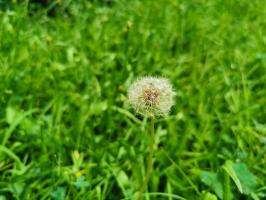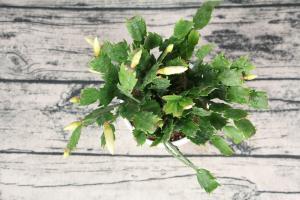Introduction
Rubber plant is a popular indoor plant that is grown for its attractive foliage and ease of care. It is a type of evergreen tree that belongs to the family of figs and is native to India, Malaysia and Indonesia. Propagating rubber plant is a simple and easy process that can be done by anyone, even beginners. In this article, we will discuss how to propagate rubber plant.
Propagating Rubber Plant from Cuttings
The easiest and most popular method of propagating rubber plant is through stem cuttings. Here are the steps to follow:
1. Choose a healthy and mature rubber plant that has multiple stems.
2. Use a sharp and sterilized knife to cut a stem that is at least 6 inches long. Make sure the cutting has at least 2-3 nodes or leaves.
3. Dip the cut end of the stem in rooting hormone, which will increase the chances of successful rooting.
4. Plant the cutting in a well-draining potting mix, making sure that the node or leaves are above the soil.
5. Water the cutting lightly and cover it with a plastic bag, creating a mini greenhouse. This will retain moisture and help the cutting to root.
6. Keep the cutting in a warm and bright location, but away from direct sunlight.
7. Check the cutting regularly and water it lightly whenever the soil feels dry.
8. Within 4-6 weeks, the cutting should begin to produce roots and new growth, which indicates successful propagation.
Propagating Rubber Plant through Air Layering
Another method of propagating rubber plant is through air layering, which involves creating a mini greenhouse around a section of the stem.
1. Choose a healthy and mature rubber plant stem that is at least 1 inch in diameter.
2. Make a 1-inch deep cut on the stem, making sure not to cut through the entire stem.
3. Apply rooting hormone to the cut section and wrap it with moist sphagnum moss.
4. Cover the sphagnum moss with plastic wrap and secure it in place with a rubber band or string.
5. Keep the section moist and warm, regularly misting the sphagnum moss to prevent it from drying out.
6. Within 4-6 weeks, roots should begin to develop from the cut section.
7. Once the roots have developed, carefully cut the section off the parent plant and plant it in a well-draining potting mix.
Troubleshooting Propagation Issues
While propagating rubber plant is generally an easy process, there may be some issues that arise. For example, if the cutting is not rooted properly, it may begin to wilt or rot. In this case, you should try the propagation process again, making sure to keep the cutting in a warm and bright location and to water it lightly. Additionally, you can try to propagate the rubber plant through air layering, which has a higher success rate. If you are still having issues, consult a gardening expert or nursery for advice.
Conclusion
Propagating rubber plant is an easy and satisfying process that can be done by any plant enthusiast. Through stem cuttings or air layering, you can create multiple plants from one parent rubber plant. Make sure to follow the proper steps and troubleshoot any issues that may arise for successful propagation. With some patience and care, you can enjoy the beauty of the rubber plant for years to come.

 how many times do yo...
how many times do yo... how many planted tre...
how many planted tre... how many pine trees ...
how many pine trees ... how many pecan trees...
how many pecan trees... how many plants comp...
how many plants comp... how many plants can ...
how many plants can ... how many plants and ...
how many plants and ... how many pepper plan...
how many pepper plan...
































